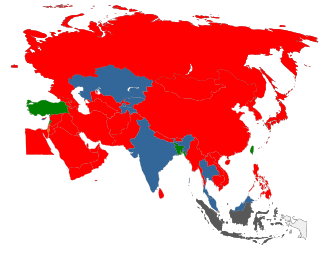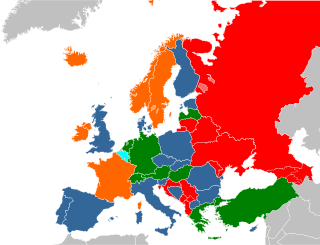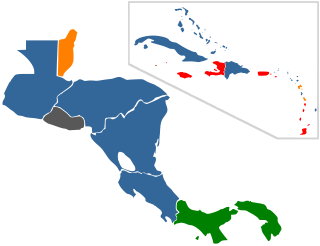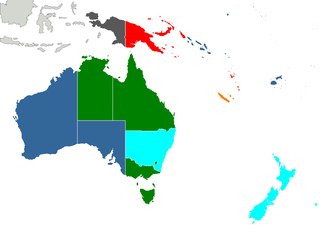Related Research Articles
Betty Jean O'Hara was a famed prostitute in Honolulu's "vice district" during World War II.

Prostitution in Japan has existed throughout the country's history. While the Prostitution Prevention Law of 1956 states that "No person may either do prostitution or become the customer of it", loopholes, liberal interpretations and a loose enforcement of the law have allowed the Japanese sex industry to prosper and earn an estimated 2.3 trillion yen per year.

After taking power in 1949, the Chinese Communist Party (CCP) embarked upon a series of campaigns with the aim of eradicating prostitution from mainland China by the early 1960s. Since the loosening of government controls over society in the early 1980s, prostitution in mainland China not only has become more visible, but can now be found throughout both urban and rural areas. In spite of government efforts, prostitution has now developed to the extent that it comprises an industry, one that involves a great number of people and produces a considerable economic output. Prostitution has also become associated with a number of problems, including organized crime, government corruption, hypocrisy, and sexually transmitted diseases. For example, a CCP official who was a major provincial campaigner against corruption was removed from his post and expelled from the party after he was caught in a hotel room with a prostitute.

In Great Britain, the act of engaging in sex as part of an exchange of various sexual services for money is legal, but a number of related activities, including soliciting in a public place, kerb crawling, owning or managing a brothel, pimping and pandering, are illegal. In Northern Ireland, which previously had similar laws, paying for sex became illegal from 1 June 2015.
Prostitution in South Korea is illegal, but according to The Korea Women's Development Institute, the sex trade in Korea was estimated to amount to 14 trillion South Korean won in 2007, roughly 1.6% of the nation's gross domestic product. According to a survey conducted by the Department of Urology at the Korea University College of Medicine in 2015, 23.1% of males and 2.6% of females, aged 18–69, had sexual experience with a prostitute.

The legality of prostitution in Asia varies by country. There is often a significant difference in Asia between prostitution laws and the practice of prostitution. In 2011, the Asian Commission on AIDS estimated there were 10 million sex workers in Asia and 75 million male customers.

Prostitution is illegal in the vast majority of the United States as a result of state laws rather than federal laws. It is, however, legal in some rural counties within the state of Nevada. Prostitution nevertheless occurs elsewhere in the country.
Prostitution in Ireland is legal. However, since March 2017, it has been an offence to buy sex. Third party involvement is also illegal. Since the law that criminalises clients came into being, with the purpose of reducing the demand for prostitution, the number of prosecutions for the purchase of sex increased from 10 to 92 between 2018 and 2020. In a report from UCD's Sexual Exploitation Research Programme the development is called ”a promising start in interrupting the demand for prostitution.”
Prostitution in Singapore in itself is not illegal, but various prostitution-related activities are criminalized. This includes public solicitation, living on the earnings of a prostitute and maintaining a brothel. In practice, police unofficially tolerate and monitor a limited number of brothels. Prostitutes in such establishments are required to undergo periodic health checks and must carry a health card.
Prostitution in Israel was legal until December 2018, but organised prostitution in the form of brothels and pimping were prohibited. Legislation passed in the Knesset on 31 December 2018 that criminalises the "clients" of prostitutes came into force in May 2020, and was regulated since July 2020 under the Israeli Abolition of Prostitution Consumption Law, where fines will be cast for consumption of prostitution services from an adult. This legislation makes Israel the tenth country to adopt the "Nordic model". The Ministry of Social Affairs and Social Services estimates there to be 14,000 prostitutes in the country.

Prostitution in Pakistan is a taboo culture of sex-trade that exists as an open secret but illegal. Prostitution is largely based in organisational setups like brothels or furthered by individual call girls.

Prostitution is legal and regulated in Bangladesh. Prostitutes must register and state an affidavit stating that they are entering prostitution of their own free choice and that they are unable to find any other work. Bangladeshi prostitutes often suffer poor social conditions and are frequently socially degraded.
Prostitution in Malaysia is restricted in all states despite it being widespread in the country. Related activities such as soliciting and brothels are illegal. In the two states of Terengganu and Kelantan, Muslims convicted of prostitution may be punishable with public caning.

The legality of prostitution in Europe varies by country.
Prostitution in Suriname is illegal but widespread and the laws are rarely enforced. Human trafficking and Child prostitution are problems in the country. Prostitutes are known locally as "motyo". UNAIDS estimate there to be 2,228 prostitutes in the country.

Prostitution is legal in Macau unlike in mainland China, because the city is a special administrative region of the country. However, operating a brothel and procuring are both illegal in Macau, with the latter punishable by a maximum jail sentence of 8 years. Street prostitution is illegal but sex work in a massage parlor is considered to be de facto legal. The city has a large sex trade despite there being no official red-light district. In addition to street prostitution, prostitutes work in low-rent buildings, massage parlours and illegal brothels, and the casinos, nightclubs, saunas and some of the larger hotels. Most hotels, however, have suspected prostitutes removed from the premises. Many of the city's sidewalks and underpasses are littered with prostitutes' calling cards.

Legality of prostitution in the Americas varies by country. Most countries only legalized prostitution, with the act of exchanging money for sexual services legal. The level of enforcement varies by country. One country, the United States, is unique as legality of prostitution is not the responsibility of the federal government, but rather state, territorial, and federal district's responsibility.

Prostitution in Oceania varies greatly across the region. In American Samoa, for instance, prostitution is illegal, whereas in New Zealand most aspects of the trade are decriminalised.
Prostitution in Fiji is legal, but most activities connected with it are illegal: brothel keeping, pimping and buying or selling sex in public. Street workers make up the bulk of Fiji's prostitutes. Many of the prostitutes are Asian, especially Chinese that provide sexual services for the growing number of tourists arriving in the country and also locals. Some come into the country on student visas. In 2014, it was estimated that there were 857 sex workers in Fiji. Even though buying and selling sex in public is illegal in Fiji, police have no legal authority to arrest prostitutes without an official report being lodged for the police to take action.
Prostitution in Guam is illegal but is practised covertly, especially in massage parlours. Although massage parlours are sometimes raided, generally the authorities turn a blind eye.
References
- 1 2 "Hawaii Prostitution and Solicitation Laws". Find Law. Retrieved November 23, 2017.
- 1 2 3 Popescu, Roxana (January 22, 2016). "Paradise lost: Sex trafficking in Hawaii". Al Jazeera. Retrieved February 5, 2018.
- ↑ "HRS Sec. 712-200. Prostitution". Hawaii Revised Statutes. State of Hawaii. Retrieved May 25, 2020.
- ↑ "Sex Work Law". Sexuality, Poverty and Law Programme. Retrieved November 21, 2017.
- ↑ "Honolulu Police Department Responds to Allegations About Officers Engaging in Sex with Prostitutes". Diamond Truckers. March 24, 2014. Retrieved November 23, 2017.
- ↑ "Hawaii lawmaker submits bill to legalize prostitution". KXAN. February 5, 2017. Retrieved November 23, 2017.
- ↑ "HB1533". Hawaii State Legislature. Retrieved November 23, 2017.
- ↑ Diamond, Milton (2004). "Pacific Center for Sex and Society - Sexual Behavior in Pre-contact Hawai'i". University of Hawaii. Retrieved February 5, 2018.
- 1 2 Woodfin, Mike. "Iwilei - Ghost Town". Ghost Towns. Retrieved February 5, 2018.
- 1 2 3 4 5 Greer, Richard. "Dousing Honolulu's Red Lights" (PDF). University of Hawaii. Retrieved February 5, 2018.
- ↑ Hori, Joan. "Japanese Prostitution in Hawaii During the Immigration Period" (PDF). University of Hawaii. Retrieved February 5, 2018.
- ↑ Hegarty, Marilyn E. (2010). Victory girls, khaki-wackies, and patriotutes : the regulation of female sexuality during World War II. New York: New York University Press. ISBN 978-0814737392.
- ↑ "Chinatown Newspaper: Honolulu Harlot". Fitted Hawaii. Retrieved February 5, 2018.
- ↑ O'Hara, Jean (May 27, 2014). My Life as a Honolulu Prostitute.
- 1 2 3 "Chinese man convicted of trafficking prostitutes to Hawaii". Taiwan News. April 7, 2017. Retrieved February 5, 2018.
- 1 2 "21-month sentence for Hawaii prostitution bribery case". WTOP. October 10, 2017. Retrieved February 5, 2018.
- ↑ Duvernay, Adam (January 10, 2018). "Exonerated death row inmate charged with sex trafficking". Delaware Online. Retrieved February 5, 2018.